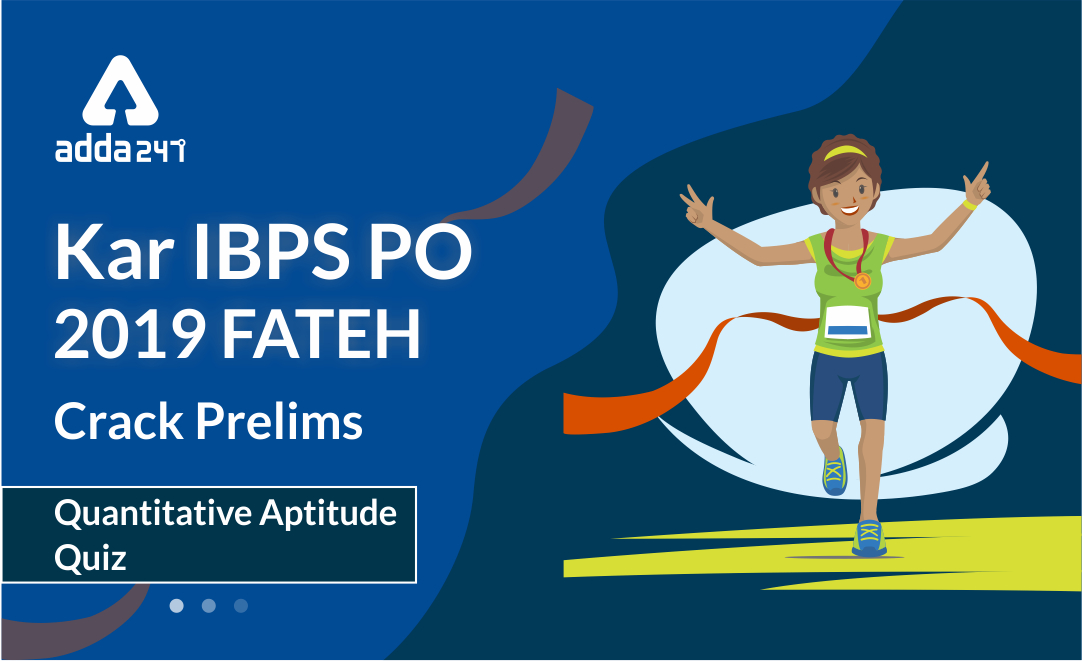Number System Questions
Number System Tricks and Strategies will help you to score better marks in the Quant section of the bank exam. Here, you can learn the shortcuts and tricks to solve Number system questions. With the increasing level in exams, Number system has become the ineluctable hitch. Generally, questions asked in this section are calculative and lengthy that consumes your time. This subject can do wonders if you always keep a check on your accuracy, speed and time. Accuracy is what matters the most. To help you prepare the section we have provided a well-defined IBPS PO Prelims Study Plan. You can also Prepare from the study note to clear your basic concepts. Attempt this quantitative aptitude quiz and check your performance for the upcoming Bank Exams. Following is the quiz on important topic from Ratio And Proportion and Number System.
Q1. In an election between two candidates, the candidate getting  of the votes polled, is elected by a majority of 14000 votes. The number of votes got by the winning candidate is
of the votes polled, is elected by a majority of 14000 votes. The number of votes got by the winning candidate is
 of the votes polled, is elected by a majority of 14000 votes. The number of votes got by the winning candidate is
of the votes polled, is elected by a majority of 14000 votes. The number of votes got by the winning candidate is
(a) 28000
(b) 32000
(c) 42000
(d) 46000
(e) 44000
Q2. The sum of 8 consecutive odd numbers is 656. Also average of four consecutive even numbers is 87. What is the sum of the smallest odd number and second largest even number ?
(a) 165
(b) 175
(c) 163
(d) Can’t be determined
(e) None of these
Q3. There are two numbers such that the sum of twice the first number and thrice the second number is 100 and the sum of thrice the first number and twice the second number is 120. Which is the larger number ?
(a) 32
(b) 12
(c) 14
(d) 35
(e) 24
Q4. Two numbers are such that if the first is subtracted from six times the second, their difference becomes 71, and if the second be added to 7 times the first, their sum becomes 62. The two numbers are:
(a) 19, 7
(b) 15, 7
(c) 7, 13
(d) 17, 3
(e) 13, 5
Q5. ‘S1’ is a series of five consecutive odd number while ‘S2’ is a series of five consecutive even numbers. Average of S1 series is 50% more than average of S2 series and sum of smallest numbers of S1 and S2 series is 67, then find the largest number of S2 series
(a) 49
(b) 41
(c) 36
(d) 34
(e) 32
Q7. Sum of 4 consecutive even numbers are 94 more than the sum of 3 consecutive odd numbers and if average of largest even no. & smallest odd no. is 42. Then find the 2nd lowest even no.?
(a) 32
(b) 42
(c) 36
(d) 46
(e) 48
Directions (8-11): What approximate value will come at the place of question mark (?).
(Note:- You are not expected to calculate exact value)
Q8. (13.012)² + (21.025)² – 29.89 × 7.025 = ? – 520 +150
(a) 770
(b) 925
(c) 820
(d) 850
(e) 720
Q9. 18.05% of 1900.128 + ?% of 1149.89 = 684.025 – 111.89
(a) 35
(b) 25
(c) 20
(d) 40
(e) 30
Directions (12-15): Simplify the following questions and find the value of question mark (?).
Q13. 99 × 41 + 46 × 72 – 49 × 69 = ?
(a) 3210
(b) 3381
(c) 3990
(d) 4059
(e) 4168
Q14. 16.5% of 1700 – 13.8% of 1750 = ?
(a) 39
(b) 33
(c) 29
(d) 43
(e) 49
You may also like to Read:
- Quantitative Aptitude Study Notes for Bank Exams
- Quantitative Aptitude Questions for all Competitive Exams

























 GA Capsule for SBI Clerk Mains 2025, Dow...
GA Capsule for SBI Clerk Mains 2025, Dow...
 The Hindu Review October 2022: Download ...
The Hindu Review October 2022: Download ...
 ECGC PO Scorecard 2025 Out, Check Marks
ECGC PO Scorecard 2025 Out, Check Marks




